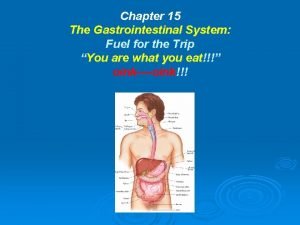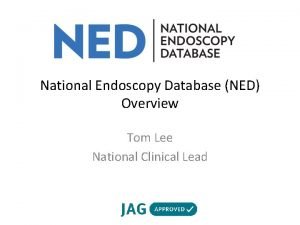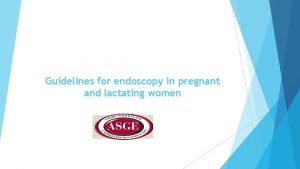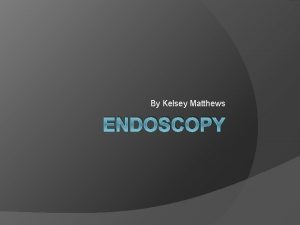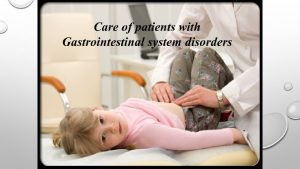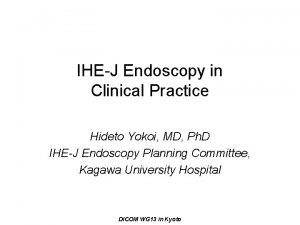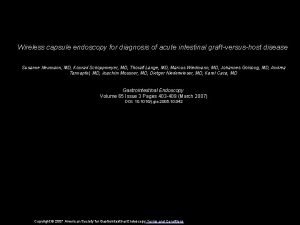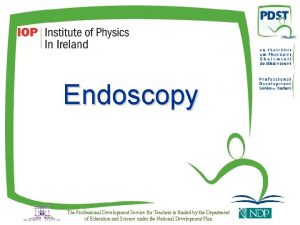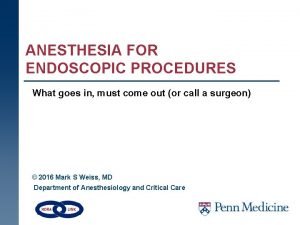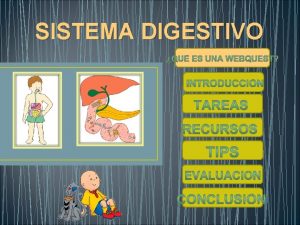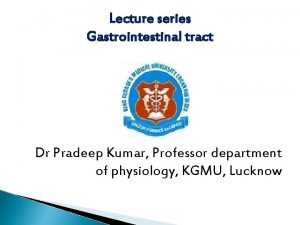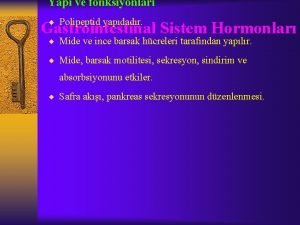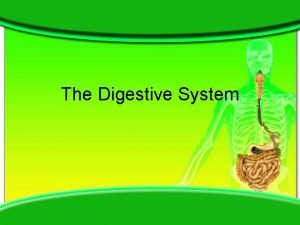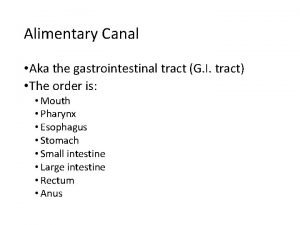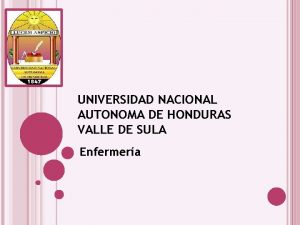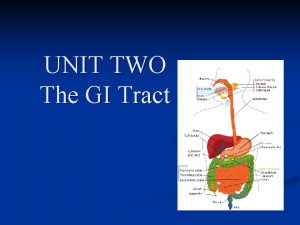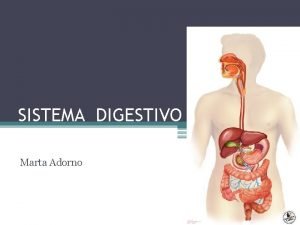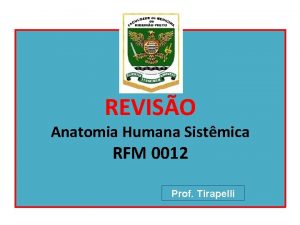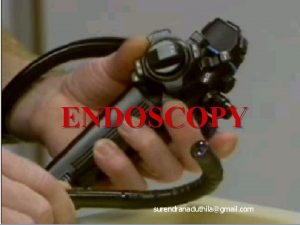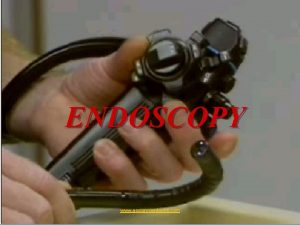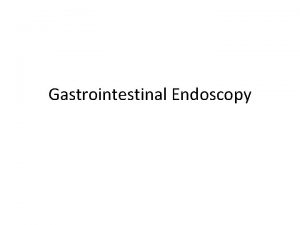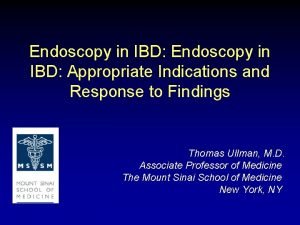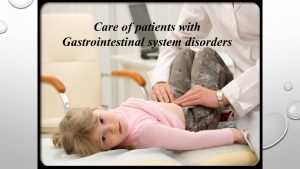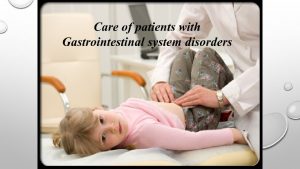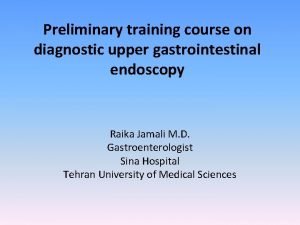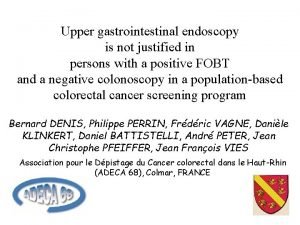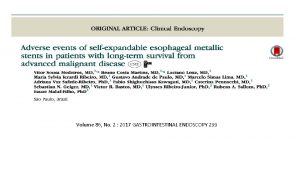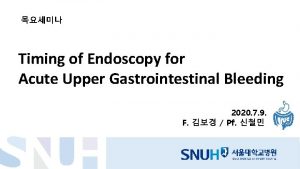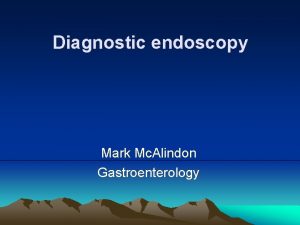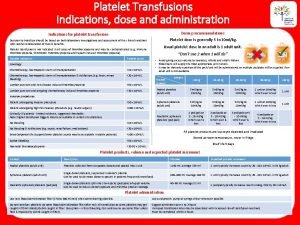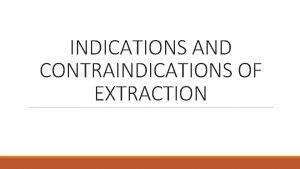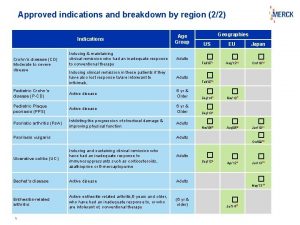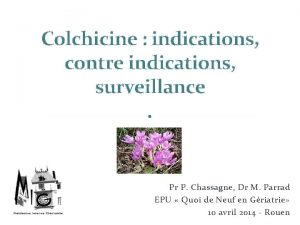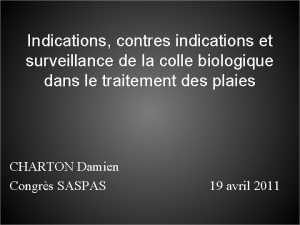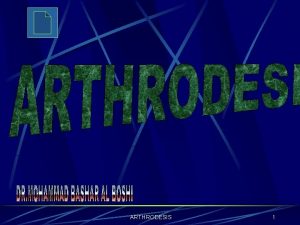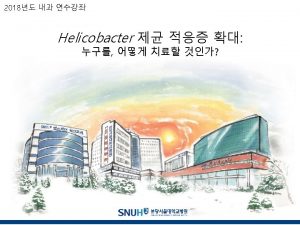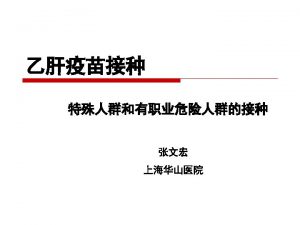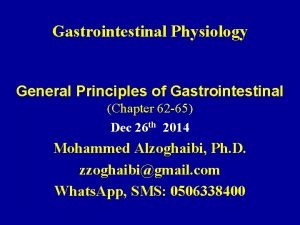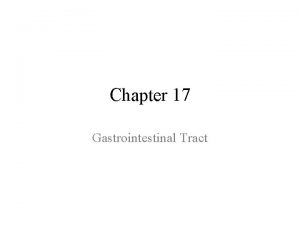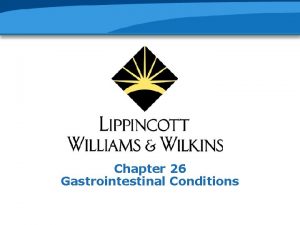CHAPTER 24 Indications and Outcomes of Gastrointestinal Endoscopy


























- Slides: 26

CHAPTER 24 Indications and Outcomes of Gastrointestinal Endoscopy Source: Burden of digestive diseases in the United States, 2008. NIH Publication No. 09 -6443 http: //www 2. niddk. nih. gov/About. NIDDK/Reports. And. Strategic. Planning/

Characteristics of Endoscopy Sites and Persons Undergoing Endoscopic Procedures, 2001 -2005 EGD = Esophagogastroduodenoscopy; ERCP = Endoscopic retrograde cholangiopancreatography; EUS = Endoscopic ultrasonography; VA = Department of Veterans Affairs SOURCE: National Endoscopy Database / Clinical Outcomes Research Initiative

Characteristics of Endoscopy Sites and Persons Undergoing Endoscopic Procedures, 2001 -2005 (continued) SOURCE: National Endoscopy Database / Clinical Outcomes Research Initiative

Characteristics of Endoscopy Sites and Persons Undergoing Endoscopic Procedures, 2001 -2005 (continued) SOURCE: National Endoscopy Database / Clinical Outcomes Research Initiative

Number of Endoscopic Procedures at “Stable” Sites (N=36) by Year, 20012005 EGD = Esophagogastroduodenoscopy SOURCE: National Endoscopy Database / Clinical Outcomes Research Initiative

Number of Endoscopic Procedures by Age, 2001 -2005 EGD = Esophagogastroduodenoscopy SOURCE: National Endoscopy Database / Clinical Outcomes Research Initiative

Number of Colonoscopies at “Stable” Sites (N=36) by Age and Year, 20012005 SOURCE: National Endoscopy Database / Clinical Outcomes Research Initiative

Number of Flexible Sigmoidoscopies at “Stable” Sites (N=36) by Age and Year, 2001 -2005 SOURCE: National Endoscopy Database / Clinical Outcomes Research Initiative

Indications for Colonoscopy and Flexible Sigmoidoscopy, 2001 -2005 Footnotes: 1 Indication categories are not mutually exclusive. 2 Bleeding group = one or more of the following symptoms: anemia or iron deficiency, positive fecal occult blood test, hematochezia, melena. 3 Irritable bowel syndrome cluster = one or more of the following symptoms: diarrhea; constipation; abdominal pain/bloating; change in bowel habits, excluding surveillance of, or established Crohn’s disease or ulcerative colitis; weight loss; and bleeding (anemia or iron deficiency, positive fecal occult blood test, hematochezia, melena). Source: National Endoscopy Database/Clinical Outcomes Research Initiative

Indications for Colonoscopy and Flexible Sigmoidoscopy, 2001 -2005 Source: National Endoscopy Database/Clinical Outcomes Research Initiative

Indications for Colonoscopy and Flexible Sigmoidoscopy, 2001 -2005 (continued) Source: National Endoscopy Database/Clinical Outcomes Research Initiative

Indications for Colonoscopy and Flexible Sigmoidoscopy, 2001 -2005 (continued) Source: National Endoscopy Database/Clinical Outcomes Research Initiative

Colonoscopy Findings in the Total Population and Persons at Routine Risk Only, and Flexible Sigmoidoscopy Findings, 2001– 2005 AVM = arteriovenous malformation 1 Finding categories are not mutually exclusive Source: National Endoscopy Database/Clinical Outcomes Research Initiative

Colonoscopy Findings in Persons at Routine Risk by Age, 2001 -2005 SOURCE: National Endoscopy Database / Clinical Outcomes Research Initiative

Colonoscopy Findings in Persons at Routine Risk by Sex, 2001 -2005 SOURCE: National Endoscopy Database / Clinical Outcomes Research Initiative

Colonoscopy Findings in Persons at Routine Risk by Race-Ethnicity, 2001 -2005 SOURCE: National Endoscopy Database / Clinical Outcomes Research Initiative

Number of EGD Procedures at “Stable” Sites (N=36) by Age and Year, 2001 -2005 EGD = Esophagogastroduodenoscopy SOURCE: National Endoscopy Database / Clinical Outcomes Research Initiative

Indications for Esophagogastroduodenoscopy (EGD) (N=270, 957), 2001– 2005 Footnotes: 1 Indication categories are not mutually exclusive. 2 Alarm symptoms = weight loss, vomiting, bleeding cluster. 3 GERD = reflux symptoms, excluding dysphagia and surveillance of Barrett’s esophagus. 4 Dyspepsia / abdominal pain = dyspepsia and/or abdominal pain/bloating, excluding reflux symptoms; dysphagia; and surveillance of Barrett’s esophagus. 5 Bleeding cluster = any of the following indications: anemia, iron deficiency without anemia, melena, hematemesis, hematochezia, positive fecal occult blood test, suspected upper gastrointestinal bleed. Source: National Endoscopy Database/Clinical Outcomes Research Initiative

Indications for Esophagogastroduodenoscopy (EGD) (N=270, 957), 2001– 2005 Source: National Endoscopy Database/Clinical Outcomes Research Initiative

Indications for Esophagogastroduodenoscopy (EGD) (N=270, 957), 2001– 2005 (continued) Source: National Endoscopy Database/Clinical Outcomes Research Initiative

Indications for Esophagogastroduodenoscopy (EGD) (N=270, 957), 2001– 2005 (continued) . Source: National Endoscopy Database/Clinical Outcomes Research Initiative

Indications for Esophagogastroduodenoscopy (EGD) (N=270, 957), 2001– 2005 (continued) . Source: National Endoscopy Database/Clinical Outcomes Research Initiative

Esophagogastroduodenoscopy (EGD) Findings (N=270, 957), 2001– 2005 1 Finding categories are not mutually exclusive. Source: National Endoscopy Database/Clinical Outcomes Research Initiative

Esophagogastroduodenoscopy (EGD) Findings (N=270, 957), 2001– 2005 (continued) 1 Finding categories are not mutually exclusive. Source: National Endoscopy Database/Clinical Outcomes Research Initiative

Endoscopic Retrograde Cholangiopancreatography (ERCP) Findings (N=9, 333), 2001– 2005 1 Finding categories are not mutually exclusive. Source: National Endoscopy Database/Clinical Outcomes Research Initiative

Endoscopic Retrograde Cholangiopancreatography (ERCP) Findings (N=9, 333), 2001– 2005 (continued) 1 Finding categories are not mutually exclusive. Source: National Endoscopy Database/Clinical Outcomes Research Initiative
 Emt chapter 18 gastrointestinal and urologic emergencies
Emt chapter 18 gastrointestinal and urologic emergencies Chapter 15 the gastrointestinal system
Chapter 15 the gastrointestinal system Ned endoscopy
Ned endoscopy Endoscopy in pregnancy guidelines
Endoscopy in pregnancy guidelines Purpose of endoscopy
Purpose of endoscopy Nursing responsibility of colostomy care
Nursing responsibility of colostomy care Upper gi small bowel follow through
Upper gi small bowel follow through Ihej
Ihej Endoscopy
Endoscopy Endoscopy total internal reflection
Endoscopy total internal reflection Hup endoscopy
Hup endoscopy Embriologia del sistema gastrointestinal
Embriologia del sistema gastrointestinal Gastrointestinal tract
Gastrointestinal tract Chemotrypsinogen
Chemotrypsinogen Gastrointestinal hormones
Gastrointestinal hormones Dr sigit djuniawan
Dr sigit djuniawan Equimosis colores
Equimosis colores Verner morrison sendromu
Verner morrison sendromu Gastrointestinal medical terminology breakdown
Gastrointestinal medical terminology breakdown Nutrition focused physical assessment
Nutrition focused physical assessment Gastrointestinal embryology
Gastrointestinal embryology Gastrointestinal tract
Gastrointestinal tract Motilidad gastrointestinal
Motilidad gastrointestinal Gastinoma
Gastinoma Foramen arcuato
Foramen arcuato Rins anatomia
Rins anatomia Functional constipation vs hirschsprung
Functional constipation vs hirschsprung

